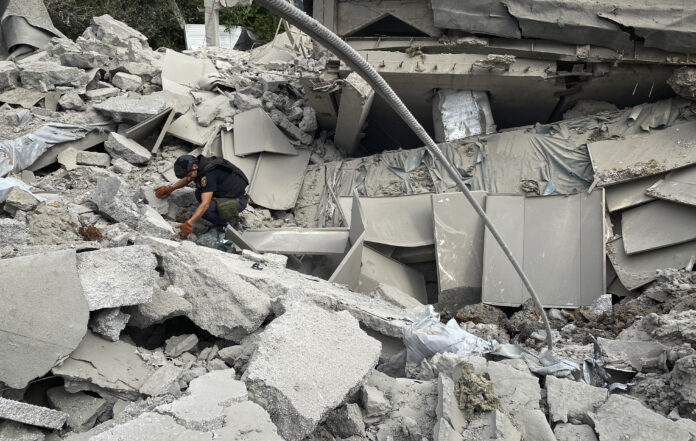Before Russia began its invasion of Ukraine just over six months ago, Artur Chenakal was living a peaceful life in Kyiv with two cats while working as a cook.
Now, he’s fighting on the front lines in the eastern Donetsk province, which has been bombarded daily by Russian attacks. He and his fellow volunteer fighters and soldiers are sleeping in tents and destroyed homes as explosions are heard nearby.
Despite the living conditions, “the morale and physical condition (among the Ukrainian troops) is high,” he told Global News in audio messages recorded from his position near the city of Bakhmut — a key Russian target where destroyed infrastructure has made communication difficult.
With no end in sight, Ukrainian President Volodymyr Zelenskyy has warned that the war will determine “the world’s future” and whether Russia will be deterred from its campaign of “insane aggression.”
In conversations with Global News, fighters and paramedics who have spent the past six months witnessing the horrors of war first-hand expressed the same urgency, along with a resolve to not give up.
“We will fight, we will finish this war and we will kick out the invaders,” Chenakal said.
Chenakal knew right away that the war would last a long time, but says he never thought twice about joining the fight or staying there until the end.
“There was no choice,” he said. “We couldn’t return to our regular lives (after a couple of months).”
In the early weeks of the invasion, Chenakal served as a grenade launcher and was among the Ukrainian forces that held Russia back from the capital, ultimately forcing them to retreat.
Artur Chenakal on the front lines of the Ukraine-Russia war in the Donbass region, eastern Ukraine.
Instagram/Artur Chenakal
Once Moscow refocused its efforts on the separatist Donbass region, in eastern Ukraine, he followed the defence forces there and trained as a combat medic.
Chenakal first arrived in the Luhansk province with a friend he had been fighting alongside since the war began, only to be separated into different units.
“We were always next to each other, but for the last two months we were about a kilometre from each other,” he said.
Last month, he says his friend’s unit came under mortar fire.
“He died and I could not say goodbye to him,” he said.
Gen. Valeriy Zaluzhnyi, the top commander of the Ukrainian Armed Forces, said Monday that about 9,000 fighters have been killed on the front lines. He did not say if that number, which has not been independently verified, includes all branches of the military or whether the number encompassed the entire six months of the war.
He added in a speech to veterans that those on the front lines are living a “constant hell.”
Putin’s plans have backfired, resulting in growing support for Ukraine
Russia has not shared an update on its military casualties since March, but Western intelligence has put the number around 20,000 troops. Ukraine’s military claimed on Thursday nearly 46,000 Russian soldiers have been killed.
The United Nations, meanwhile, has confirmed 5,587 civilians killed and another 7,890 wounded since the war began, though the Office of the High Commissioner for Human Rights believes the numbers are far higher.
Paramedics like Yuliia Sidorova and Volodymyr Ventsel have tended to many of those civilians, all while watching their home city of Kharkiv turn into ruins.
Ukraine’s second-largest city was, along with Kyiv, an early target of Russian attacks and continues to suffer missile attacks that have destroyed civilian infrastructure, including several universities and research facilities.
“It’s very difficult to explain the feeling of seeing the ruins of your city,” Ventsel said in a phone interview.
“There used to be children playing in the streets, students walking around. Right now it’s not like that. There’s not so many people like there was before.”



